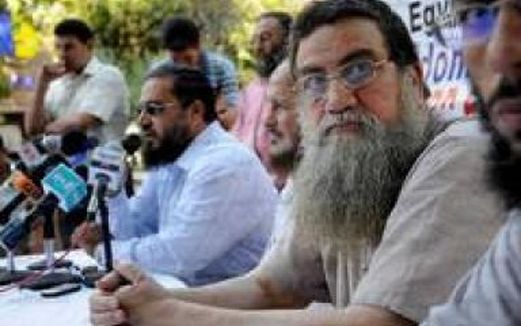Egypt’s Al-Gama’a Terrorists
By James Donahue
In the 1970s another student group emerged in Egypt under the tongue-twisting name al-Gama’a al-Islamiyya, which translates in English to mean “The Islamic Group.” It was a strong left-wing political group, dominated by Marxists, that opposed the Sadat government.
The Gama’a was dedicated to the overthrow of the Egyptian government and replacing it with an Islamic state. Instead of making peace with Israel, the organization called for a war of revenge against Israel.
As the organization grew in popularity among the students, it eventually gained up to one-third of all student union elections. It’s platform had a Sunni Islamism ideology that called for Islamic dress, the veiling of women and the segregation of classes by gender.
By 1977 the Gama’a was in complete control of the universities in Egypt. Eventually it spilled out into the populous and eventually developed into a militant group. Some thought the organization was involved in the murder of President Sedat but this was never proven.
The Egyptian terrorists were responsible for the assassination of Farag Foda, a popular writer and columnist who criticized the Islamist ideology and its demand for Sharia law. The group failed in an attempt to assassinate President Hosni Mubarak in 1995, carried out a car bomb attack on the police station in Rijeka, Croatia, shot up the Europa Hotal in Cairo leaving 18 Greek tourists dead, and conducted the 1997 massacre in Luxor that left 62 people dead. Those were just a few of the deadly guerilla attacks carried out by Gama’a militants during the active years.
The organization fought an insurgency against the Egyptian government between 1992 and 1998 that left nearly 800 police officers and government soldiers dead.
After agreeing to a peace initiative, the group was involved in the coup that toppled Mohamed Morsi from office. The movement was reported by the media as the Arab Spring. They were given support from al-Qaeda and the governments of Iran and Sudan.
Something happened in 2003. Al-Gama’a al-Islamiyya renounced bloodshed. In exchange Egypt released about 1,200 members from prison. It is believed that the killing of foreign tourists during many of the attacks made the organization unpopular and had a lot to do with the shift in emphasis.
The organization still exists, however. In 2006 Ayman al-Zawahiri, deputy leader of al-Qaeda, revealed a new alliance with a faction of al-Gama’a al-Islamiyya. To date there has been no further militant action by the Egyptian members. The organization remains on the U.S. terrorist watch list and everybody is taking a wait-and-see attitude.
By James Donahue
In the 1970s another student group emerged in Egypt under the tongue-twisting name al-Gama’a al-Islamiyya, which translates in English to mean “The Islamic Group.” It was a strong left-wing political group, dominated by Marxists, that opposed the Sadat government.
The Gama’a was dedicated to the overthrow of the Egyptian government and replacing it with an Islamic state. Instead of making peace with Israel, the organization called for a war of revenge against Israel.
As the organization grew in popularity among the students, it eventually gained up to one-third of all student union elections. It’s platform had a Sunni Islamism ideology that called for Islamic dress, the veiling of women and the segregation of classes by gender.
By 1977 the Gama’a was in complete control of the universities in Egypt. Eventually it spilled out into the populous and eventually developed into a militant group. Some thought the organization was involved in the murder of President Sedat but this was never proven.
The Egyptian terrorists were responsible for the assassination of Farag Foda, a popular writer and columnist who criticized the Islamist ideology and its demand for Sharia law. The group failed in an attempt to assassinate President Hosni Mubarak in 1995, carried out a car bomb attack on the police station in Rijeka, Croatia, shot up the Europa Hotal in Cairo leaving 18 Greek tourists dead, and conducted the 1997 massacre in Luxor that left 62 people dead. Those were just a few of the deadly guerilla attacks carried out by Gama’a militants during the active years.
The organization fought an insurgency against the Egyptian government between 1992 and 1998 that left nearly 800 police officers and government soldiers dead.
After agreeing to a peace initiative, the group was involved in the coup that toppled Mohamed Morsi from office. The movement was reported by the media as the Arab Spring. They were given support from al-Qaeda and the governments of Iran and Sudan.
Something happened in 2003. Al-Gama’a al-Islamiyya renounced bloodshed. In exchange Egypt released about 1,200 members from prison. It is believed that the killing of foreign tourists during many of the attacks made the organization unpopular and had a lot to do with the shift in emphasis.
The organization still exists, however. In 2006 Ayman al-Zawahiri, deputy leader of al-Qaeda, revealed a new alliance with a faction of al-Gama’a al-Islamiyya. To date there has been no further militant action by the Egyptian members. The organization remains on the U.S. terrorist watch list and everybody is taking a wait-and-see attitude.
